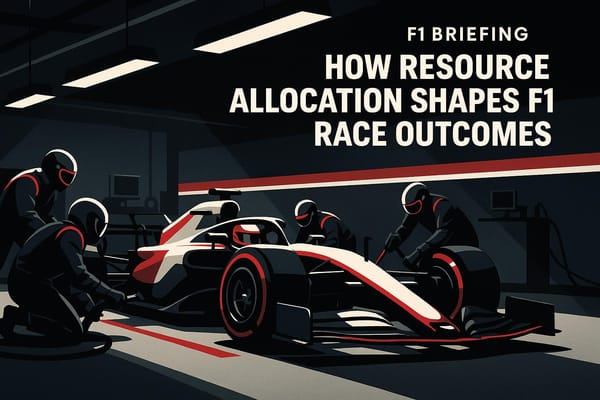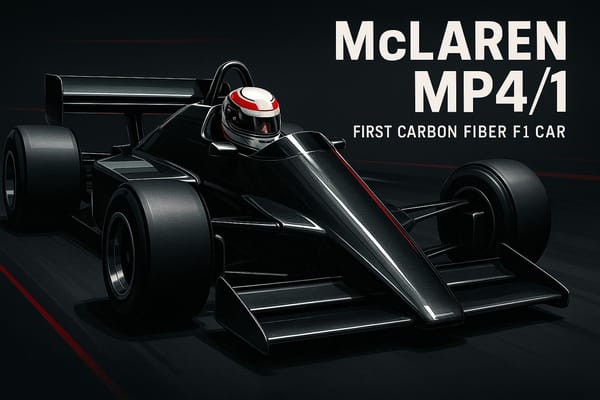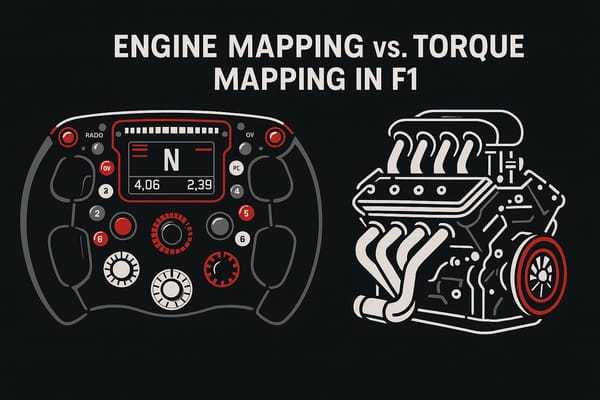Circuit Gilles Villeneuve: Canada’s Wall of Champions and the Legacy of Speed
Explore the thrilling legacy of Circuit Gilles Villeneuve, home to the Wall of Champions and unforgettable Formula One moments.
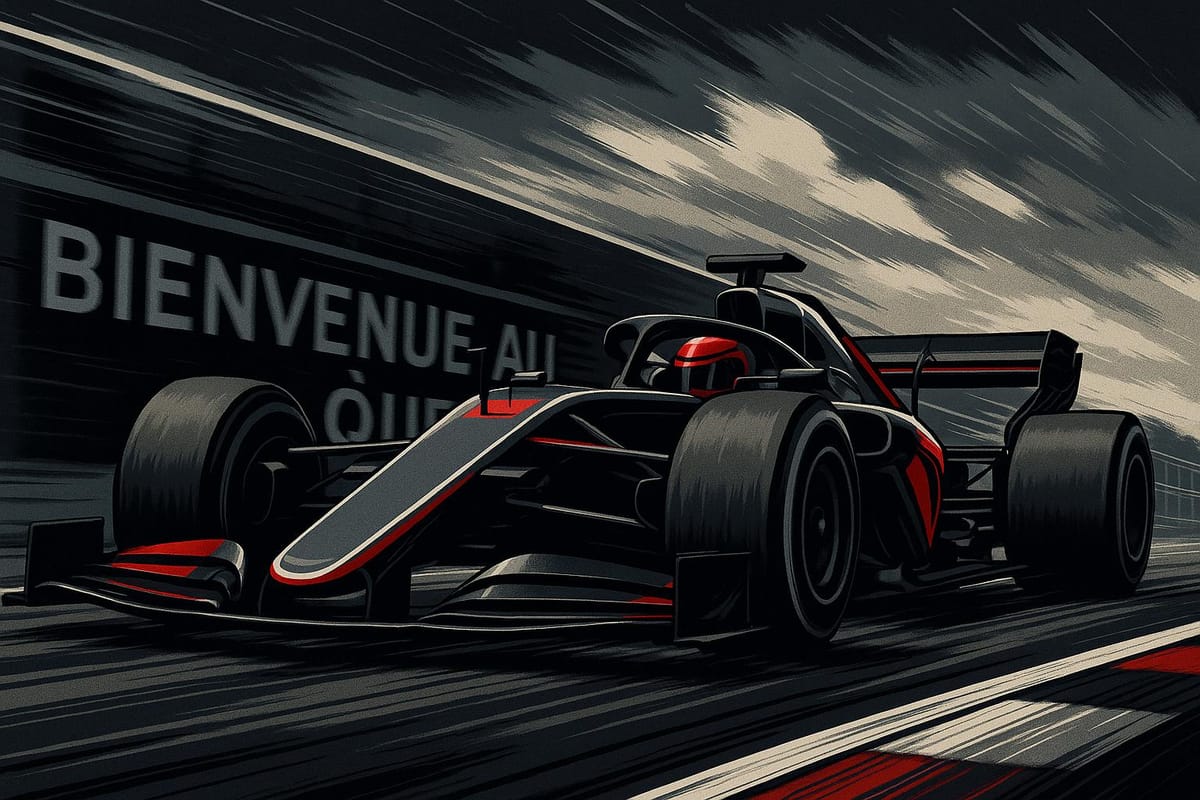
Circuit Gilles Villeneuve is one of Formula One's most challenging and iconic tracks, located on Île Notre-Dame in Montreal. Known for its high-speed straights, tight chicanes, and the infamous "Wall of Champions", this track has tested the world's best drivers since its debut in 1978. Here’s what you need to know:
- Track Length: 4.361 km (2.71 miles) with 14 turns.
- Lap Record: 1:13.078 by Valtteri Bottas in 2019.
- Safety Car Probability: 83%, making races unpredictable.
- Key Feature: The "Wall of Champions" at Turn 14, which has claimed multiple world champions like Michael Schumacher and Jacques Villeneuve.
- Historical Moment: Gilles Villeneuve won the inaugural race in 1978, the only Canadian to win the Canadian Grand Prix.
This semi-street circuit demands precision, bravery, and adaptability from drivers, while its unpredictable weather and high-speed layout create thrilling races year after year. Montreal transforms into a motorsport hub every June, celebrating the legacy of Gilles Villeneuve and the excitement of Formula One.
F1 Canadian Grand Prix Guide (Montreal)
Circuit Design and Development Over Time
Circuit Gilles Villeneuve has transformed from a simple island roadway into one of Formula One's most demanding tracks. This journey reflects decades of changes that continue to push both drivers and their machines to the limit. Its development has been shaped by significant renovations and reconfigurations over the years.
Major Changes and Construction History
The circuit's story begins with roads built on Île Notre-Dame for the 1967 Expo 67 World's Fair. These roads were later utilized during the 1976 Montreal Summer Olympics. Officially debuting in 1978 as the Île Notre-Dame Circuit, it hosted its first Grand Prix that same year. In 1982, it was renamed Circuit Gilles Villeneuve to honor Canadian racing legend Gilles Villeneuve. A major overhaul in 1987 required the circuit to take a year off the Formula One calendar for renovations.
Track Layout and Technical Specifications
Circuit Gilles Villeneuve stretches 4.361 km (2.710 miles) and includes 14 turns, with a 1,190-meter main straight where cars can hit speeds of up to 342.7 km/h (213 mph). The track layout combines long straights with tight chicanes and hairpin turns, creating a unique challenge. Its asphalt, maintained by Parc Jean-Drapeau, adheres to strict FIA standards, ensuring top-tier racing conditions. In 2019, Valtteri Bottas set the fastest race lap here with a time of 1:13.078. The race itself spans 70 laps, covering a total distance of 305.27 km (189.686 miles).
What Makes Circuit Gilles Villeneuve Different
What sets Circuit Gilles Villeneuve apart is its semi-street layout, which leaves little room for error due to minimal run-off areas. It blends the close-quarters feel of a street circuit with the high-speed thrills of a permanent track. The design forces teams to favor low-downforce setups for straight-line speed, but this comes at the cost of making the technical sections more demanding. Adding to the challenge, the weather is often unpredictable, requiring drivers to adapt quickly. With walls, trees, and spectators positioned close to the racing line, the circuit creates an intimate, high-energy atmosphere. Its layout also encourages overtaking, especially in heavy braking zones, making for thrilling, action-packed races.
The Wall of Champions: History and Impact
At first glance, the concrete barrier at Turn 14's exit might seem like a standard safety feature. But over the years, it has transformed into one of Formula One's most infamous landmarks. Known as the "Wall of Champions", this unyielding obstacle has humbled even the most skilled drivers, reshaping how competitors approach the final chicane at Circuit Gilles Villeneuve.
How the Wall of Champions Got Its Name
The Wall of Champions earned its nickname during the 1999 Canadian Grand Prix, a race that saw three world champions fall victim to its unforgiving nature. Damon Hill, the 1996 champion, was the first to crash, losing control of his Jordan on lap 14 and breaking his rear suspension after clipping the wall. Just 15 laps later, Michael Schumacher, leading the race at the time, hit the wall, destroying the right side of his Ferrari on lap 29. Then, Jacques Villeneuve, the 1997 champion, completed the trio of crashes when he ran wide mid-corner and struck the barrier on lap 34.
"I lost control of the vehicle and hit the wall, there's nothing more to it than that."
That race set a record for Safety Car deployments at the time, with the car appearing four times. The Wall of Champions claimed four drivers in total during that event, three of whom were world champions. Since then, the wall has continued to live up to its name, becoming a symbol of both challenge and consequence.
Major Crashes and Affected Drivers
The wall’s legacy didn’t stop with 1999. Over the years, it has continued to catch drivers off guard. In 2005, Jenson Button, running in third, misjudged his approach and crashed into the wall on lap 13. In 2011, Sebastian Vettel also fell victim during Free Practice 1, losing control after a sudden oversteer.
Michael Schumacher’s reaction to his 1999 crash revealed the emotional toll these incidents can take. When questioned immediately afterward, he snapped:
"Have you a bit of respect for humans?"
Later, with more composure, he reflected on the mistake:
"It was very clearly a mistake by myself. I seem to make one a year, and I hope that's the last one I make."
These crashes highlight the wall's ability to punish even the smallest errors, cementing its reputation as one of the most challenging features on the Formula One calendar.
How the Wall Affects Racing Strategy
The Wall of Champions doesn’t just test drivers’ skills - it also forces teams to rethink their strategies. Its presence adds a layer of complexity to the already demanding Circuit Gilles Villeneuve. Positioned at the exit of a heavy braking zone following the main straight, the wall leaves no room for error. Drivers must carefully balance aggression and caution to avoid disaster.
Jacques Villeneuve offered insight into the challenges posed by track conditions:
"Some drivers cut it pretty hard and there's a lot of sand going on the track. So if you're just a little bit wide, you lose a lot of grip – and it's the same for everybody."
Teams face their own set of challenges when preparing cars for Montreal. To maximize speed on the circuit’s long straights, many opt for medium-low or low downforce setups. However, this choice can make tires more prone to sliding, especially when entering tight corners like the final chicane. Precision becomes critical.
Fernando Alonso summed up the circuit’s unique demands:
"It's a semi-street circuit, so you get very close to the walls and you need to ride the kerbs as well. Very aggressive, very bumpy circuit."
The constant threat of the wall, combined with the track’s tight turns and high speeds, tests both technical skill and mental resilience. It’s no surprise that the Safety Car is a frequent sight here, appearing in 60% of Formula One races at the venue. More than two decades after earning its nickname, the Wall of Champions continues to challenge the best in the sport, standing as a stern reminder of the fine line between glory and disaster.
Key Races and Historic Moments
Montreal’s Circuit Gilles Villeneuve has long been a stage for some of Formula One’s most unforgettable moments, blending high-speed straights with tricky chicanes to create races filled with triumph, heartbreak, and drama. Since hosting its first Grand Prix in 1978, the track has delivered everything from record-breaking victories to weather-driven chaos, cementing its place in motorsport lore.
Record-Breaking Victories and Achievements
The circuit's history began with an emotional high in 1978 when Gilles Villeneuve claimed victory in front of his home crowd, forever linking his name to the track.
Two of Formula One’s greatest drivers, Michael Schumacher and Lewis Hamilton, share the record for the most wins at Montreal, each with seven triumphs to their name. Schumacher’s time at the circuit wasn’t without its challenges, including his infamous crash at the Wall of Champions in 1999. Meanwhile, Hamilton’s connection to Montreal began with his maiden Formula One victory in 2007, a pivotal moment that launched a legendary career.
Montreal has also been the site of remarkable comebacks and breakthroughs. Robert Kubica’s 2008 victory, just a year after surviving a horrifying crash at the same track, stands out as one of the sport’s most inspiring moments. Similarly, Daniel Ricciardo’s first Formula One win in 2014 showcased the circuit’s knack for delivering unpredictable, edge-of-your-seat racing.
Weather-Disrupted Races
Montreal’s weather is as unpredictable as its races, often playing a starring role in the drama. The 2011 Canadian Grand Prix, for example, became the longest race in Formula One history, stretching over four hours due to relentless rain. Jenson Button’s journey to victory that day was nothing short of extraordinary. He endured six safety car periods, five pit stops, a drive-through penalty, and even a collision with his teammate, Lewis Hamilton, before ultimately crossing the finish line first.
The circuit’s challenges don’t stop with the weather. The Wall of Champions has claimed many victims, including Sebastian Vettel, who crashed his Red Bull during practice in 2011, adding his name to the infamous list. More recently, the 2024 Canadian Grand Prix saw Max Verstappen master wet conditions, beating Lando Norris and George Russell to claim victory, proving once again how crucial wet-weather skills are at this track.
Races That Shaped the Circuit's Reputation
Certain races have left an indelible mark on the circuit’s reputation. One of the most controversial was the 2019 Canadian Grand Prix, where Sebastian Vettel crossed the line first but lost the win to Lewis Hamilton due to a time penalty. This decision sparked heated debates about racing rules and officiating, showcasing how Montreal can influence not just races but entire seasons.
These moments have solidified Circuit Gilles Villeneuve’s reputation as a place where anything can happen. It’s a track that rewards skill, bravery, and adaptability while delivering unforgettable memories for drivers and fans alike. With every race, the circuit continues to add new chapters to its storied history, blending the thrill of speed with the ever-present risk that defines Formula One.
Team Strategy and Car Setup Approaches
Circuit Gilles Villeneuve is like a chessboard for engineers, demanding a careful balance between speed and control. Its mix of fast straights and tight chicanes pushes teams to make critical compromises that can make or break their weekend.
Main Strategy Factors
Tire management takes center stage in Montreal. The stop-and-go nature of the track puts significant stress on the rear tires, especially during heavy braking and acceleration out of the chicanes. With tire wear rated at 3/5, teams must carefully plan their strategies to tackle these challenges.
The pit lane, spanning 405 meters and averaging an 18-second stop, opens up strategic opportunities for teams. The frequent appearance of safety cars only adds to the unpredictability, requiring teams to stay nimble and ready to adjust their plans on the fly.
"We think a two-stop is still the most plausible option, favoring the use of the medium and hard. The one-stop is theoretically possible, but unlikely to pay off, especially as overtaking is possible here." - Mario Isola, Pirelli Head of F1
Cars spend 76% of the lap at full throttle, with the longest flat-out stretch reaching 1,190 meters. Add in 52 gear changes per lap, and you get a circuit that challenges both drivers and their machinery. Optimizing gearbox mapping becomes a priority to handle the constant acceleration and braking cycles.
These factors directly shape how teams prepare their cars for the unique demands of Montreal.
Car Configuration for Montreal
Setting up a car for Montreal is a balancing act that defines a team’s competitiveness for the weekend. Low downforce setups are essential for maximizing straight-line speed, but they also need to handle the technical sections effectively.
To tackle the aggressive kerbs, teams go for softer front and rear suspension while ensuring the ride height is high enough to avoid bottoming out. The circuit's mix of long straights and sharp corners demands this delicate setup.
Differential settings also play a key role, requiring precise adjustments to maintain traction in slower corners. With a track grip rating of 1/5, teams have to pay extra attention to brake cooling and tire temperature management - elements that are less critical on higher-grip circuits.
These technical compromises influence not only the car’s performance but also the strategies teams bring to the race.
Aggressive vs. Conservative Race Tactics
Montreal’s layout offers teams two distinct paths: play it safe or take big risks. The choice between aggressive and conservative strategies often determines who comes out on top. Both approaches are shaped by car setup and the unpredictable nature of the race.
Conservative strategies usually rely on a two-stop plan with medium and hard tires. This approach prioritizes steady performance while minimizing the risks of tire degradation. With a 19-second time loss in the pit lane, teams aim to stretch their stints and avoid unnecessary stops.
On the flip side, aggressive tactics can yield big rewards but require flawless execution. These strategies often hinge on external factors like safety car timing. A great example? The 2025 Canadian Grand Prix, where George Russell’s bold two-stop strategy secured him the win. It was a perfect demonstration of how calculated risks can pay off.
| Strategy Type | Tire Approach | Risk Level | Success Factors |
|---|---|---|---|
| Conservative | Medium-Hard-Hard | Low | Consistent pace, tire preservation, avoiding mistakes |
| Moderate Aggressive | Medium-Hard-Medium | Medium | Balanced performance, adaptability to safety cars |
| High Risk | Soft-Hard-Hard | High | Perfect timing, safety car opportunities, superior pace |
Nearly half of the race winners at the circuit - 49% - have started from pole position, with another 17% coming from second on the grid. For teams starting further back, alternative strategies often become the go-to, though they typically rely on external factors like a well-timed safety car to succeed.
And then there’s the weather. Montreal’s unpredictable conditions can flip a strategy on its head in a matter of minutes. A conservative plan might suddenly turn aggressive, forcing teams to adapt in real time based on track conditions and tire performance data. It’s this constant element of surprise that makes racing at Circuit Gilles Villeneuve so thrilling.
Circuit Gilles Villeneuve's Lasting Impact on Formula One
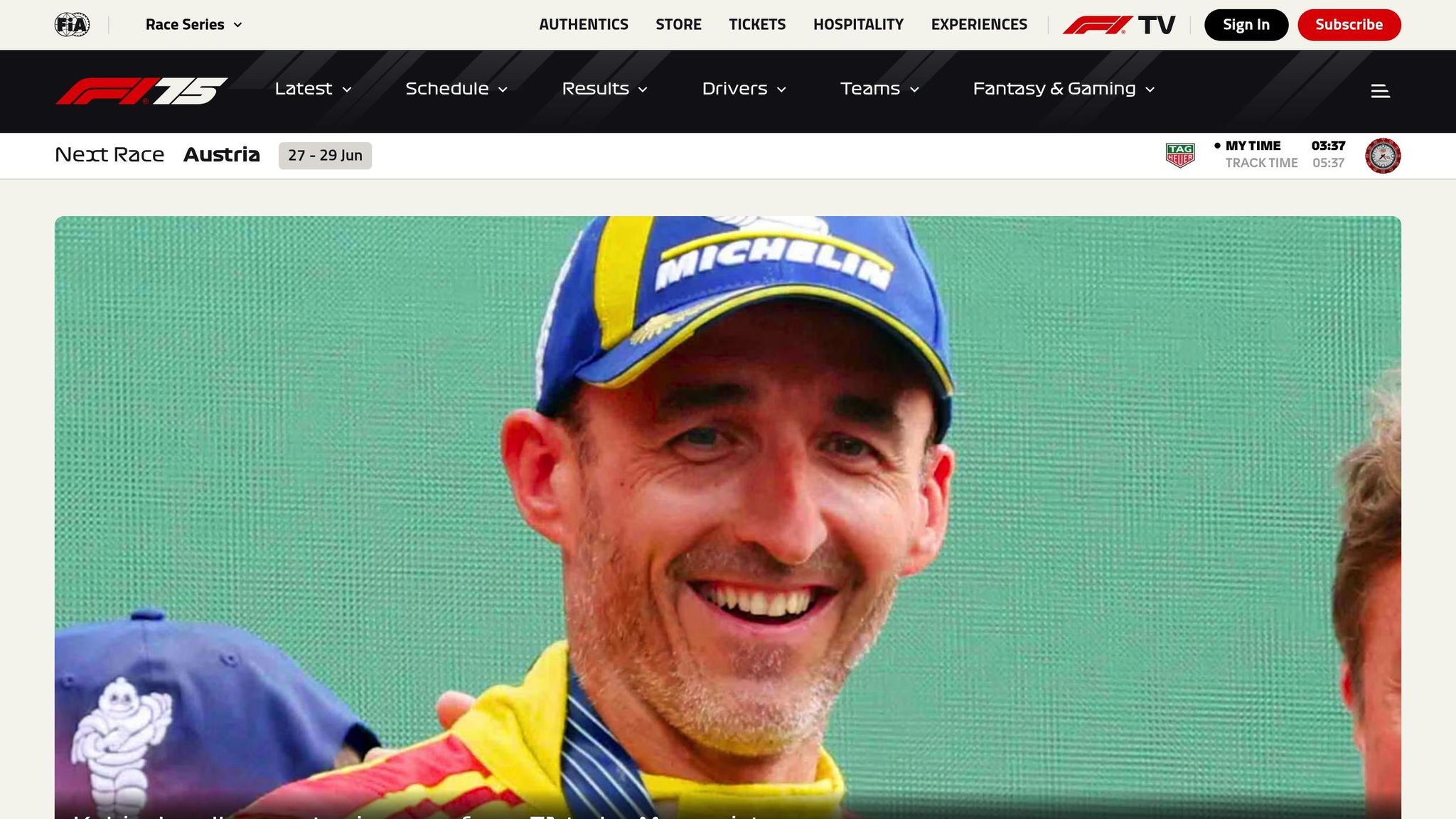
Circuit Gilles Villeneuve has carved out a legacy in Formula One that spans nearly five decades, becoming a cornerstone for driver development and a blueprint for modern track design. Its iconic layout combines high-speed stretches with tight chicanes, creating a relentless test of skill and precision. This track doesn't just measure speed - it challenges drivers to master every nuance of racecraft. One of its most famous features, the Wall of Champions, embodies this relentless demand for excellence.
The Wall of Champions: A True Test of Precision
Turn 15's Wall of Champions has earned its reputation as one of Formula One's ultimate challenges. This concrete barrier has claimed its share of both champions and rookies, proving that even the best are not immune to its demands. To navigate it successfully, drivers need razor-sharp precision and nerves of steel.
The wall is a fitting tribute to Gilles Villeneuve's daring and calculated driving style, which continues to inspire racers today. Niki Lauda once praised Villeneuve's raw talent, stating:
"Villeneuve had the best talent of all. In whatever car you put him in, he would be fast."
Motorsport journalist Nigel Roebuck also highlighted Villeneuve's unique flair:
"Gilles was the only one who forced you to look for a good curve in rehearsals, because you knew that where everyone else was passing like they were on rails, Gilles was worth watching."
The Wall of Champions carries forward this spirit, pushing drivers to the edge of their abilities. It’s this mix of challenge and nostalgia that cements the circuit's place in Formula One lore.
The Canadian Grand Prix: A Fan Favorite
The Canadian Grand Prix remains one of the most beloved events on the Formula One calendar, thanks in part to the circuit's unforgiving nature, which sharpens driver skills and influences team strategies. With an 83% chance of a safety car and a 50% likelihood of a virtual safety car during the race, fans can always count on unpredictable and thrilling action. In 2024 alone, the weekend drew an impressive 350,000 attendees.
Located on Île Notre-Dame, the circuit offers a unique and picturesque setting. Former Renault F1 driver Jolyon Palmer described the atmosphere perfectly:
"Canada is a really nice track to drive and you get a sense of atmosphere going around it. Overhanging trees give it the feel of a park and it feels like a street circuit – in essence, it is."
This blend of natural beauty and street-circuit vibes transforms Montreal into a vibrant hub of Formula One excitement. The city comes alive during race weekend, with fans and locals alike embracing the festivities.
The Canadian Grand Prix's future is secure, with a contract extending through 2035. Jean-Philippe Paradis, President and CEO of the Canadian Grand Prix, expressed his dedication to the event:
"I'm personally waking up every day to make sure that we have a top race, and this race stays here for the next 100 years."
From Gilles Villeneuve's historic win in 1978 to unforgettable moments like the marathon 2011 race - the longest in Formula One history - Montreal continues to deliver iconic memories. Circuit Gilles Villeneuve remains a venue where legends are made, ensuring its place as a cornerstone of Formula One for years to come.
FAQs
Why is the Wall of Champions at Circuit Gilles Villeneuve so difficult for even the best Formula 1 drivers?
The Wall of Champions at Circuit Gilles Villeneuve is infamous for its challenging location - right at the exit of the final chicane, one of the fastest and most technical parts of the track. Drivers have to thread the needle here, balancing razor-sharp precision with speeds that often top 200 mph. A tiny misstep in judgment or control? That’s all it takes to end up colliding with the wall.
This notorious barrier got its name after the 1999 Canadian Grand Prix, when several world champions, including Damon Hill, Michael Schumacher, and Jacques Villeneuve, fell victim to it. The daunting mix of a high-speed approach, minimal room for error, and its unforgiving positioning makes this corner a relentless challenge - demanding every ounce of skill, focus, and courage, even from the best in the sport.
How does weather affect race strategies at Circuit Gilles Villeneuve, and what are some notable examples?
Weather is a game-changer when it comes to race strategies at Circuit Gilles Villeneuve, thanks to Montreal’s famously unpredictable conditions. Rain and chilly temperatures often force teams to think on their feet, switching to wet or intermediate tires to maintain grip on the track. These choices can drastically affect lap times and overall performance. Take the 1978 Canadian Grand Prix, for instance - one of the coldest races on record. With temperatures hovering around 41°F, drivers had to battle not just their rivals but also the challenge of keeping their tires and cars under control.
Another unforgettable example is the 2011 Canadian Grand Prix. Heavy rain forced the race to start behind the safety car, and teams had to constantly adjust their strategies as weather conditions shifted throughout the day. The rain led to extended delays and chaotic restarts, making quick thinking and adaptability essential for success. These moments underscore how critical it is for teams to stay sharp and make rapid decisions to balance speed and safety when the weather refuses to cooperate.
What makes Circuit Gilles Villeneuve so popular, and how does its design add excitement to the Canadian Grand Prix?
Circuit Gilles Villeneuve stands out as a fan favorite, thanks to its exhilarating mix of high-speed straights, tight hairpins, and tricky chicanes. These elements come together to create a racing experience that's both fast-paced and unpredictable. The layout pushes drivers to make daring overtakes and experiment with different strategies, keeping the excitement alive for fans.
What truly sets this track apart are its demanding features. From intense braking zones to the infamous Wall of Champions - a spot that has caught out even the best drivers - the circuit tests skill and precision at every turn. With a history filled with unforgettable races and legendary moments, Circuit Gilles Villeneuve has earned its reputation as one of Formula One’s most thrilling and cherished tracks.
Related posts
- Monaco Grand Prix Circuit Guide: The Prestige, Precision, and Pressure of F1’s Crown Jewel
- Albert Park Uncovered: The History, Evolution, and Challenges of the Australian Grand Prix Circuit
- Suzuka’s Legacy: How Japan’s Iconic Figure-8 Circuit Became a Driver Favourite
- Jeddah Corniche Circuit: The High-Speed Street Track Redefining Night Racing in Saudi Arabia

